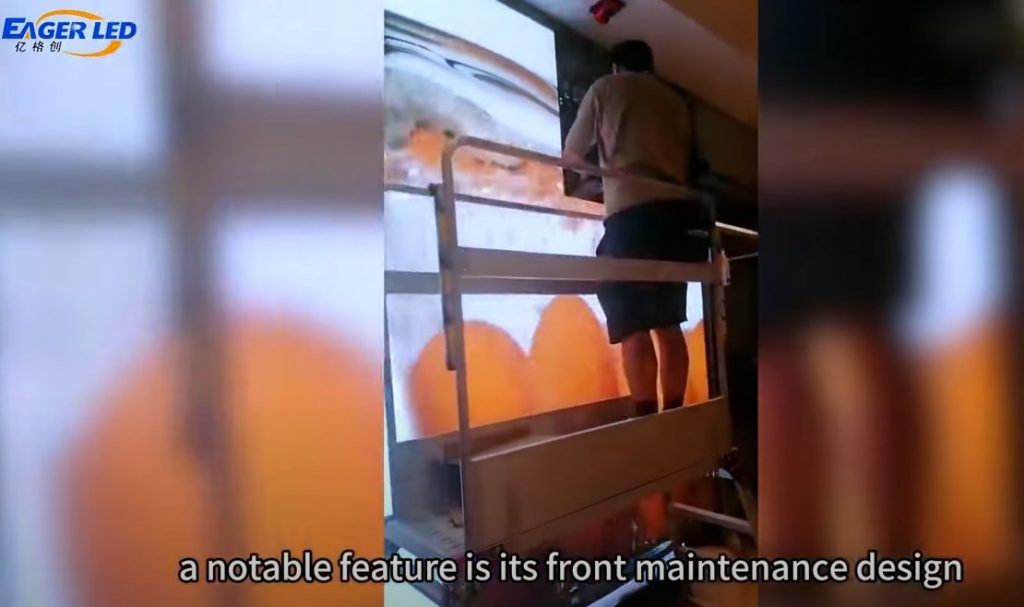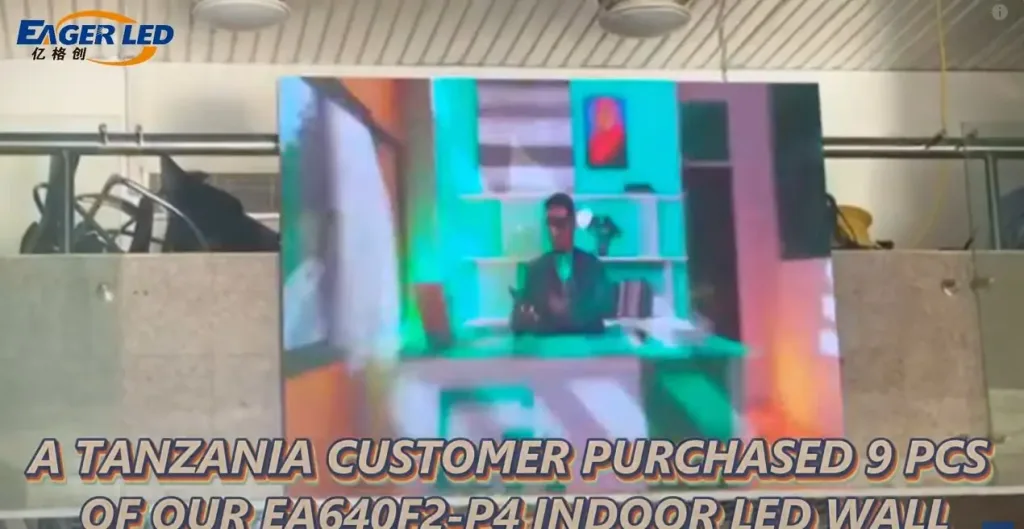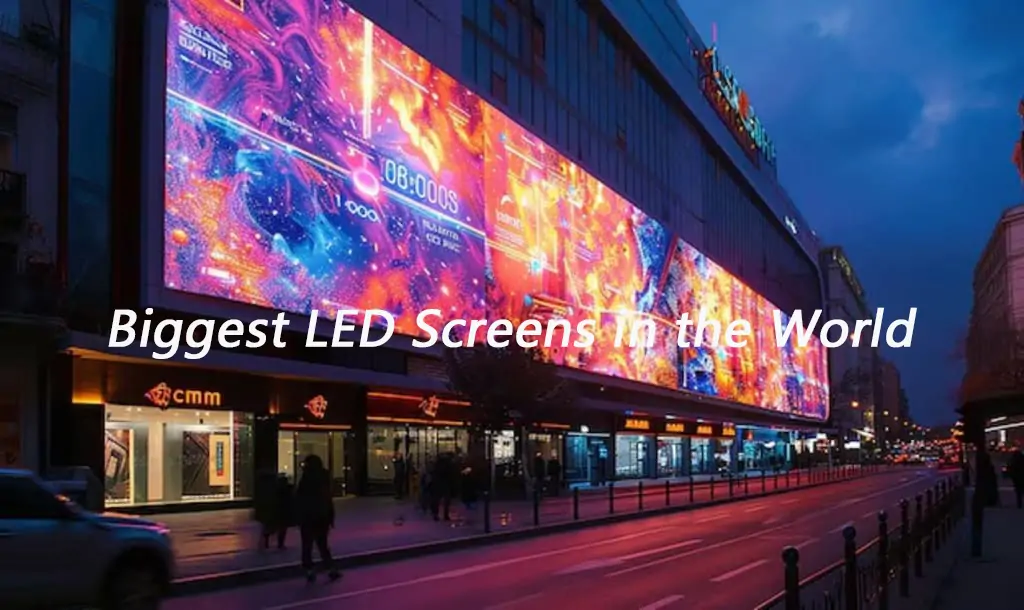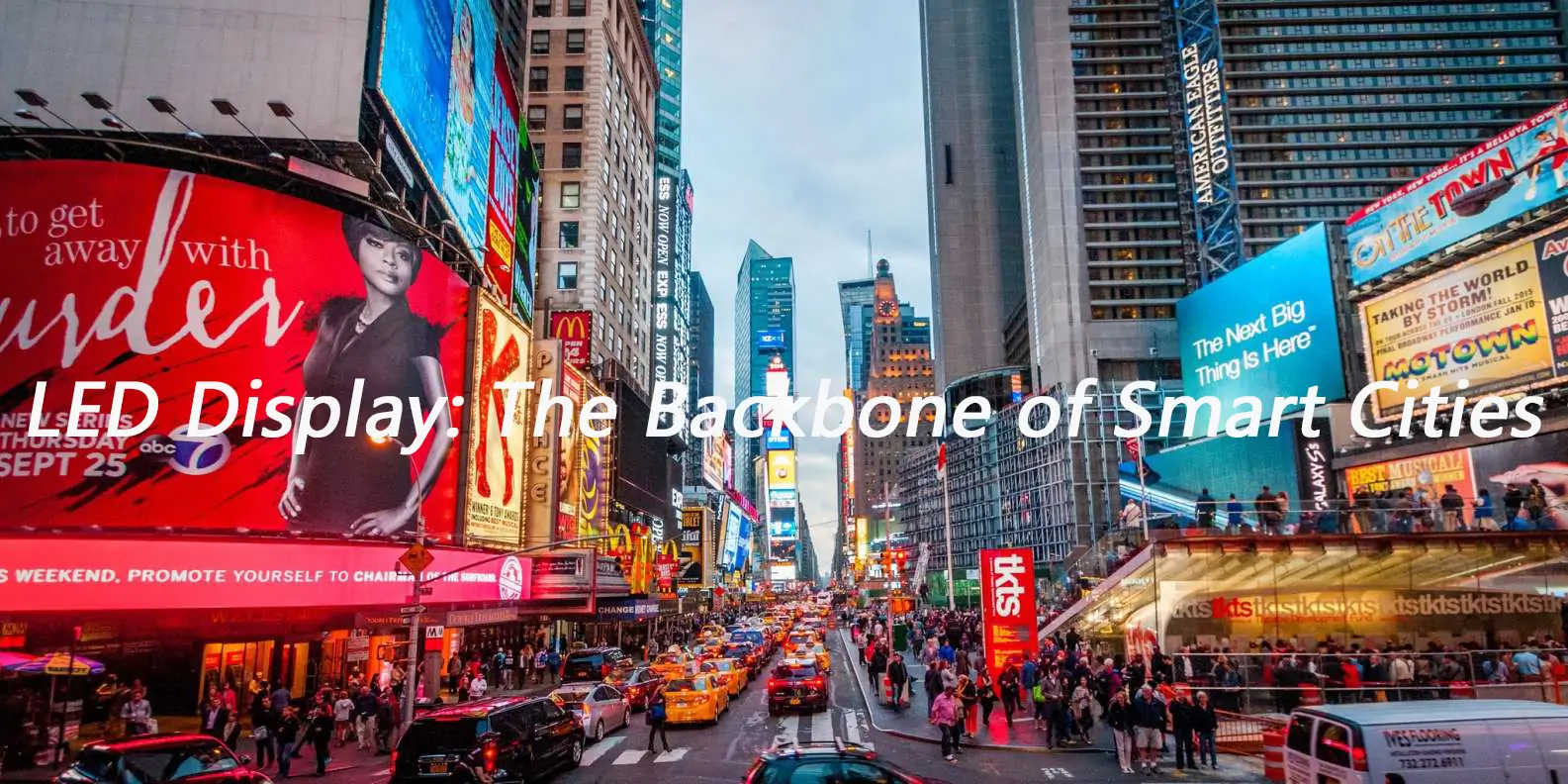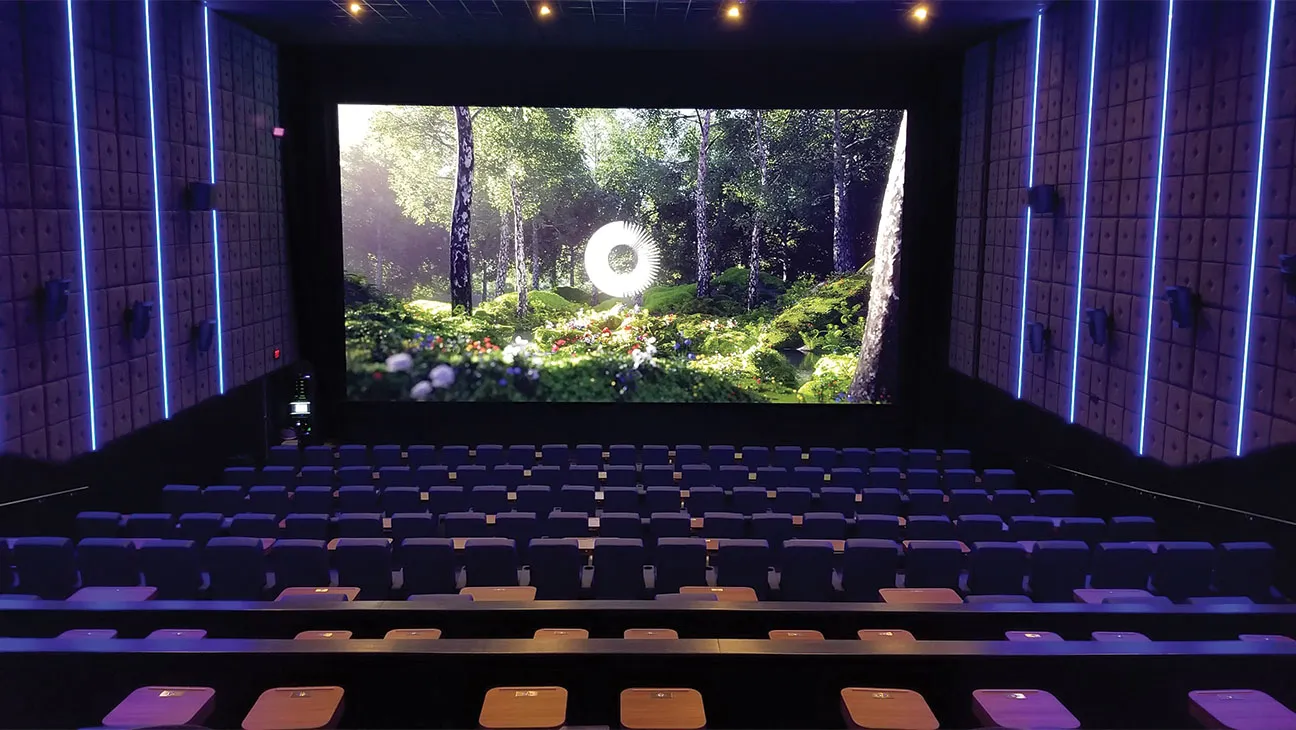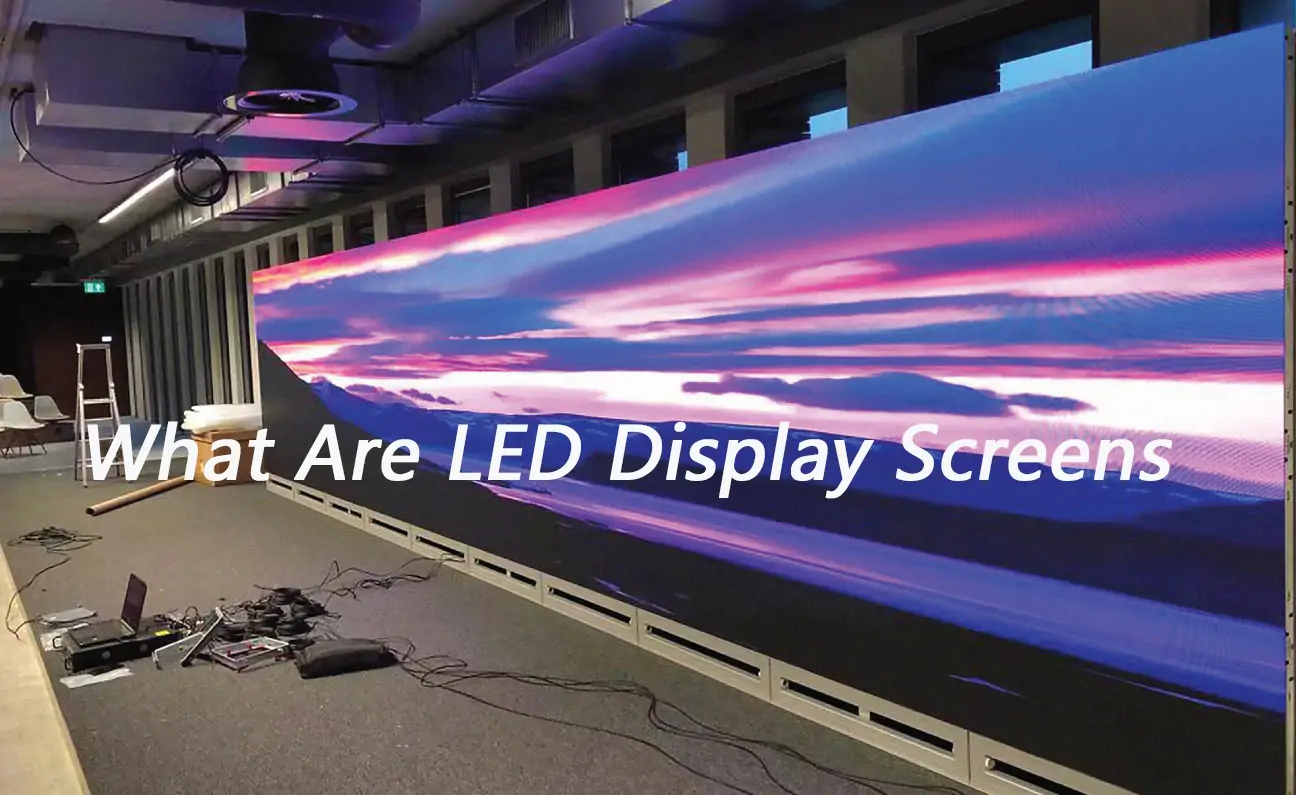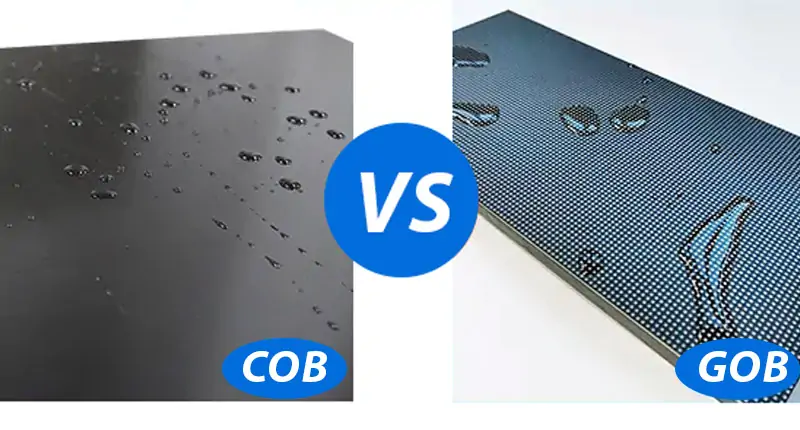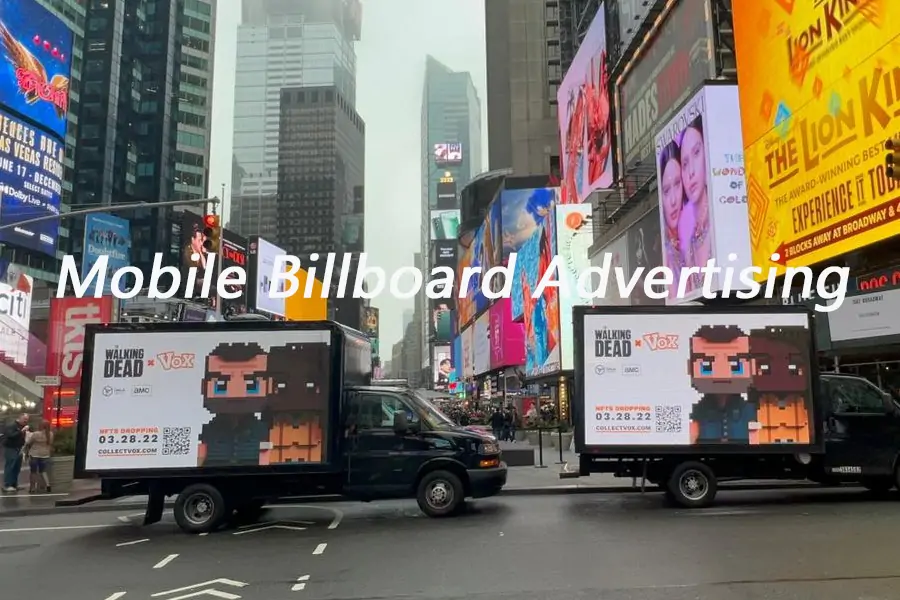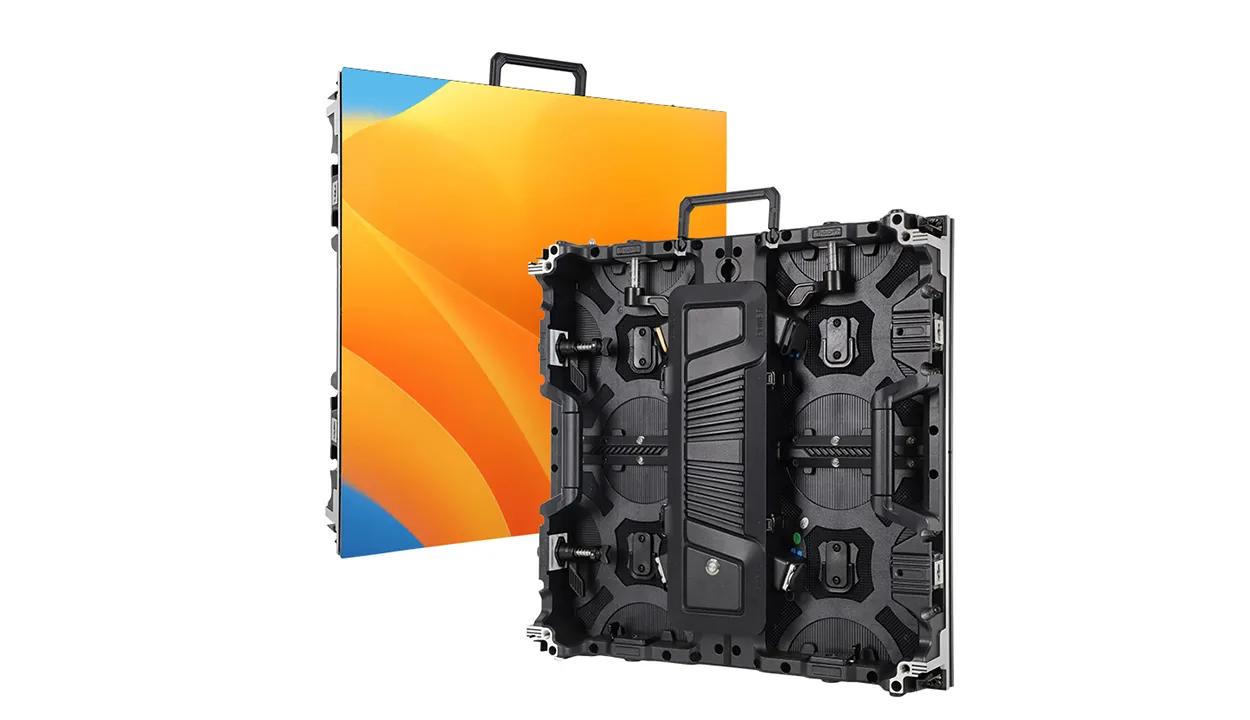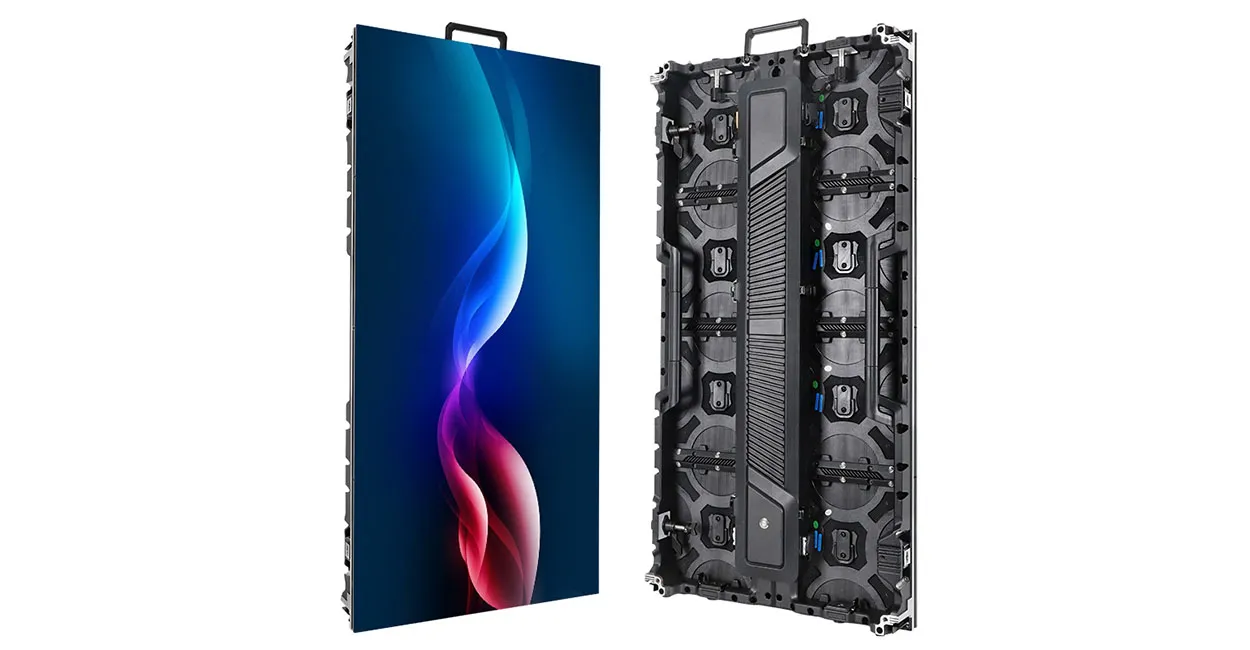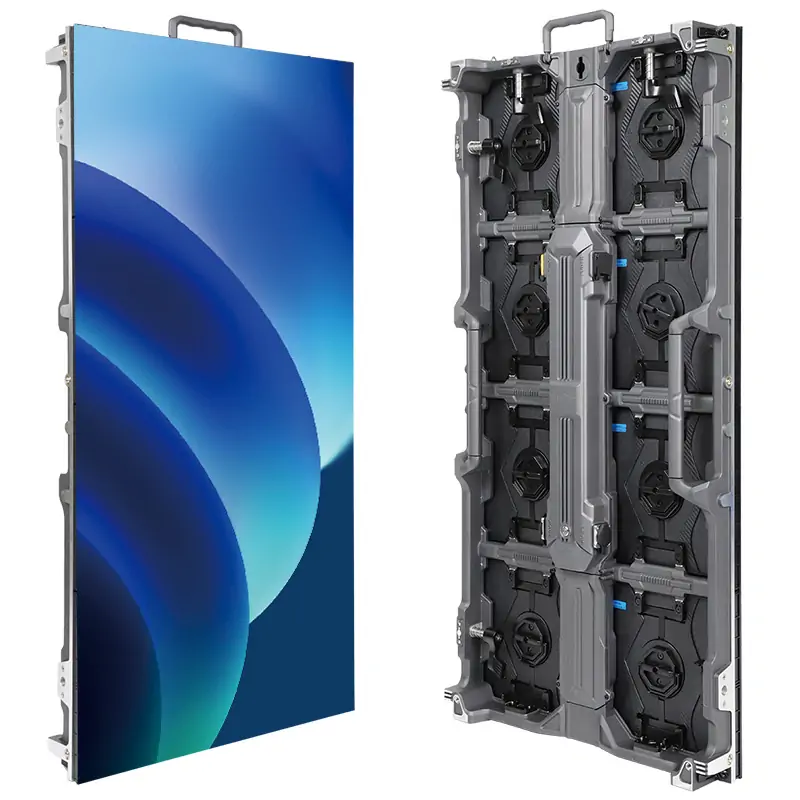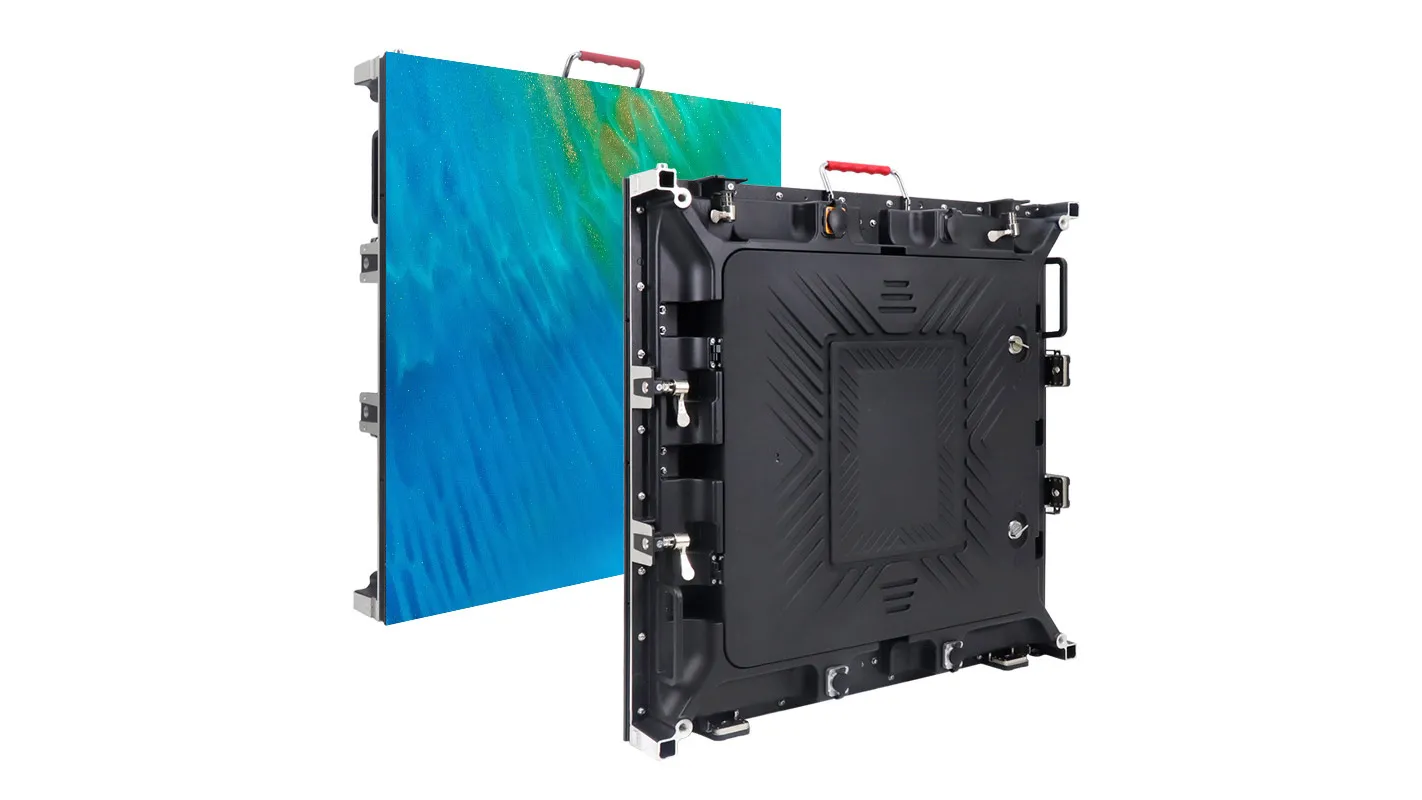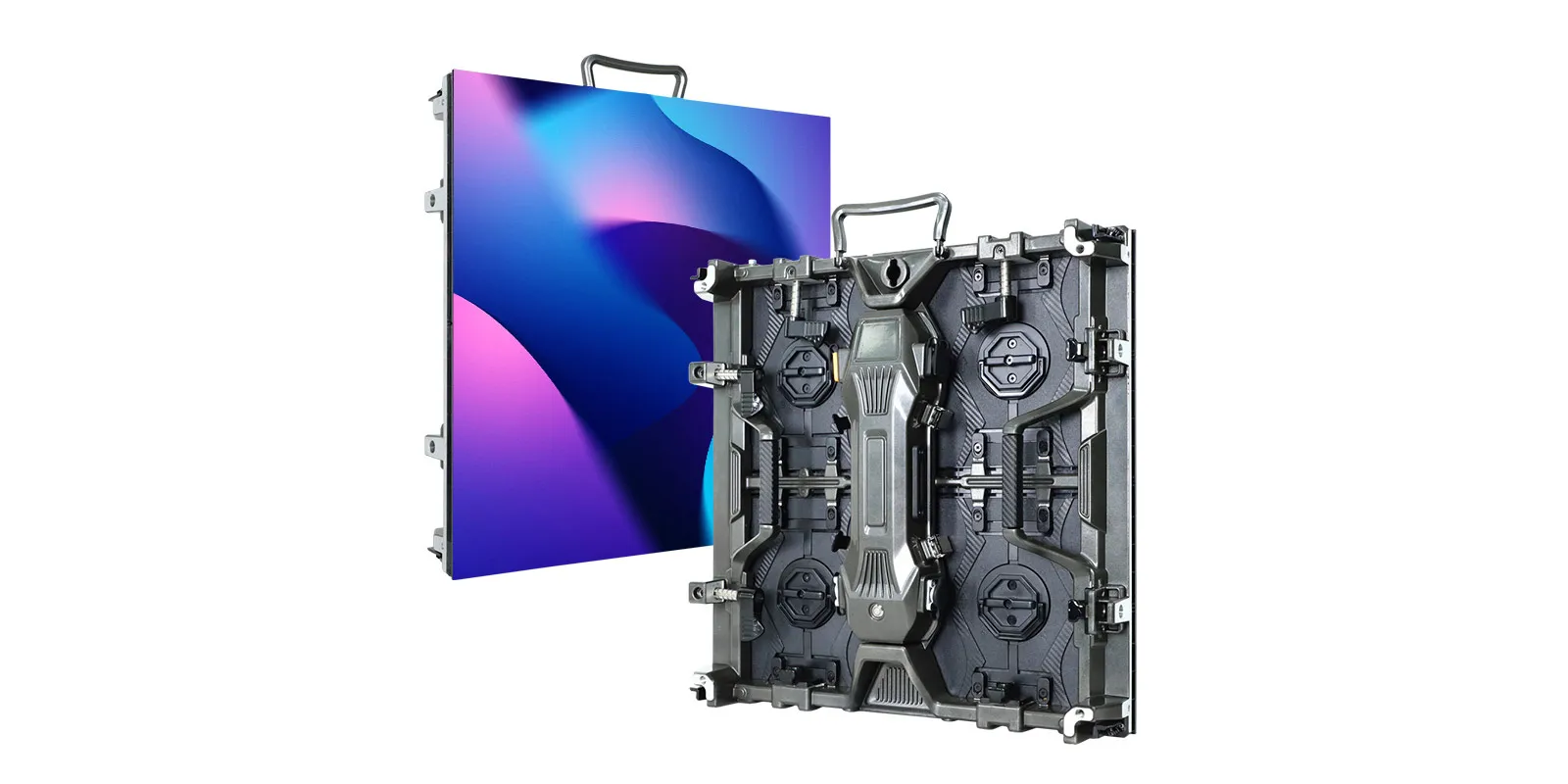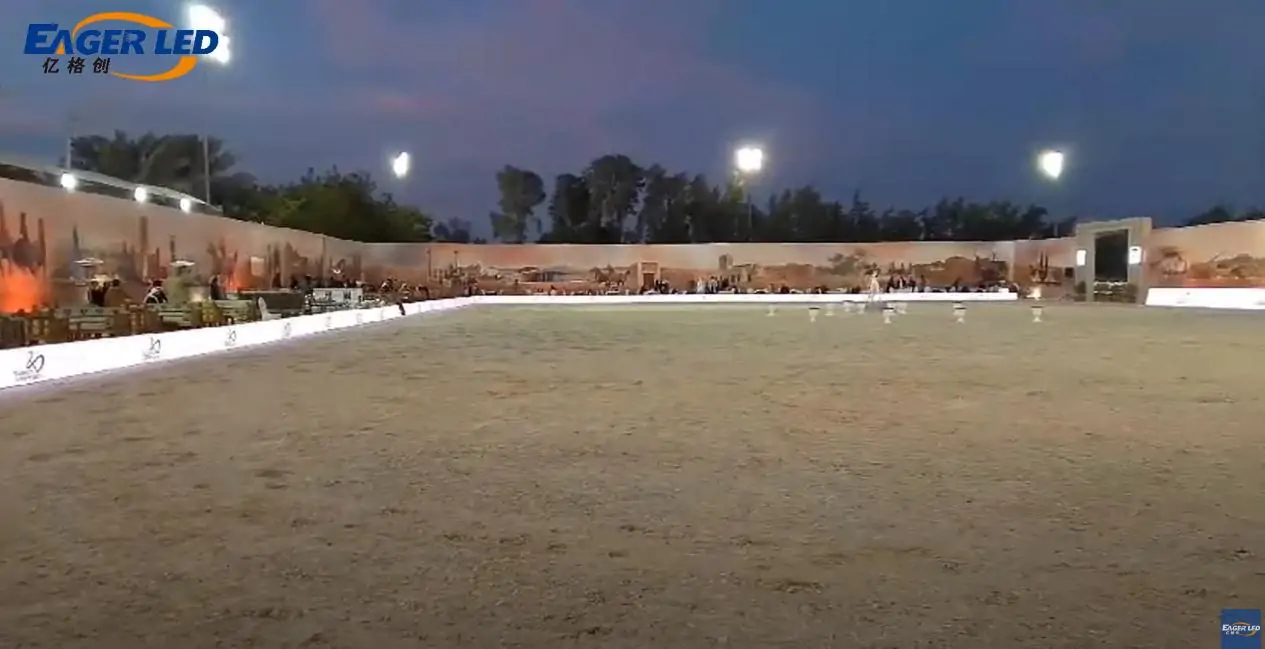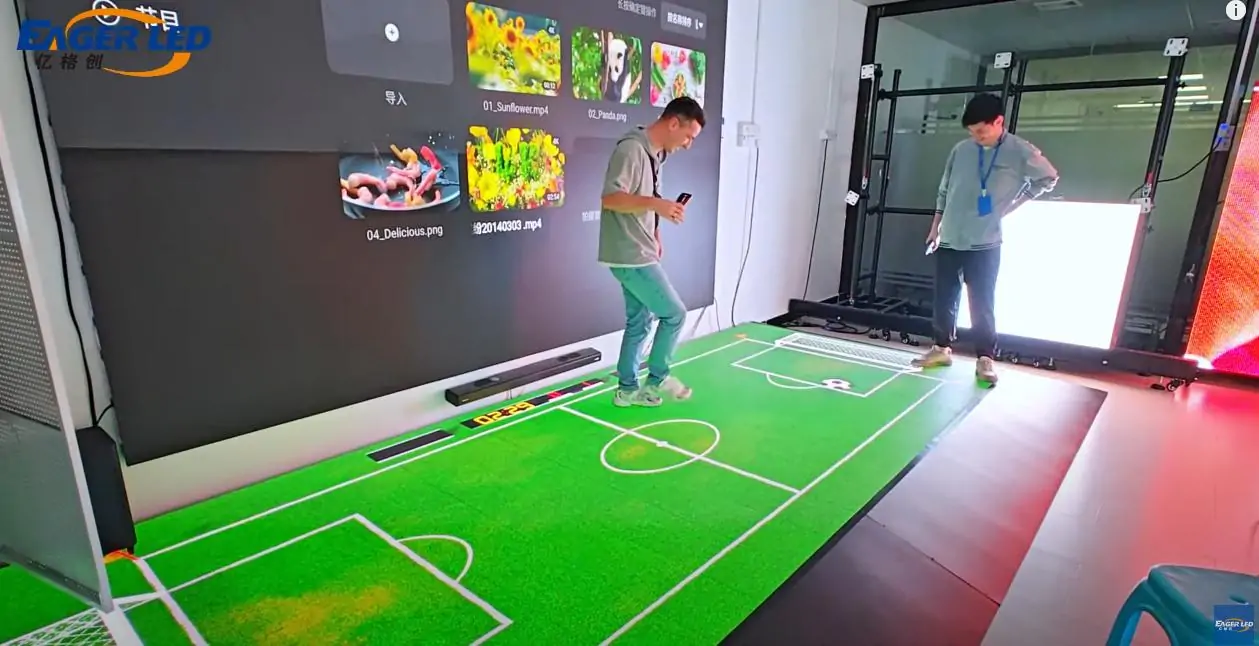In this article, we will discuss LED Poster in terms of definition, working principle, main features, installation, maintenance and more. This is the ultimate guide to the LED poster display in 2025, giving you a comprehensive understanding of LED poster screens from beginner to master.
- 1. Was ist ein LED-Poster?
- 2. Wie Does An LED Poster Anzeige WOrk?
- 3. Was sind die Hauptmerkmale von LED-Postern im Jahr 2025?
- 4. Wie man CKontrolle CInhalt auf An LED Poster SBildschirm?
- 5. Poster-LED-Bildschirm VS LCD Plakate
- 6. Installationsanleitung für digitale LED-Poster
- 7. Wie pflege ich die LED-Posteranzeige?
- 8. Warum wählen EagerLED?
- 9. Fazit
1. What is An LED Poster?
LED Poster Display, also known as LED Totem, is widely used for rental LED screens and fixed LED displays. The main structure of an LED display consists of the screen and its rear stand. It is a lightweight and portable LED display with high quality and vibrant colors, ideal for displaying dynamic content such as images and videos. It is a lightweight, portable LED display with high brightness and vibrant colors, ideal for displaying dynamic content such as images, videos and animations.
It can be a stand-alone smart LED poster, or you can connect up to 10 LED posters together to form a huge LED video wall to showcase your exciting content. LED posters can be stand-alone, wall-mounted, suspended, and you can even add your own personal touch through creative splicing.
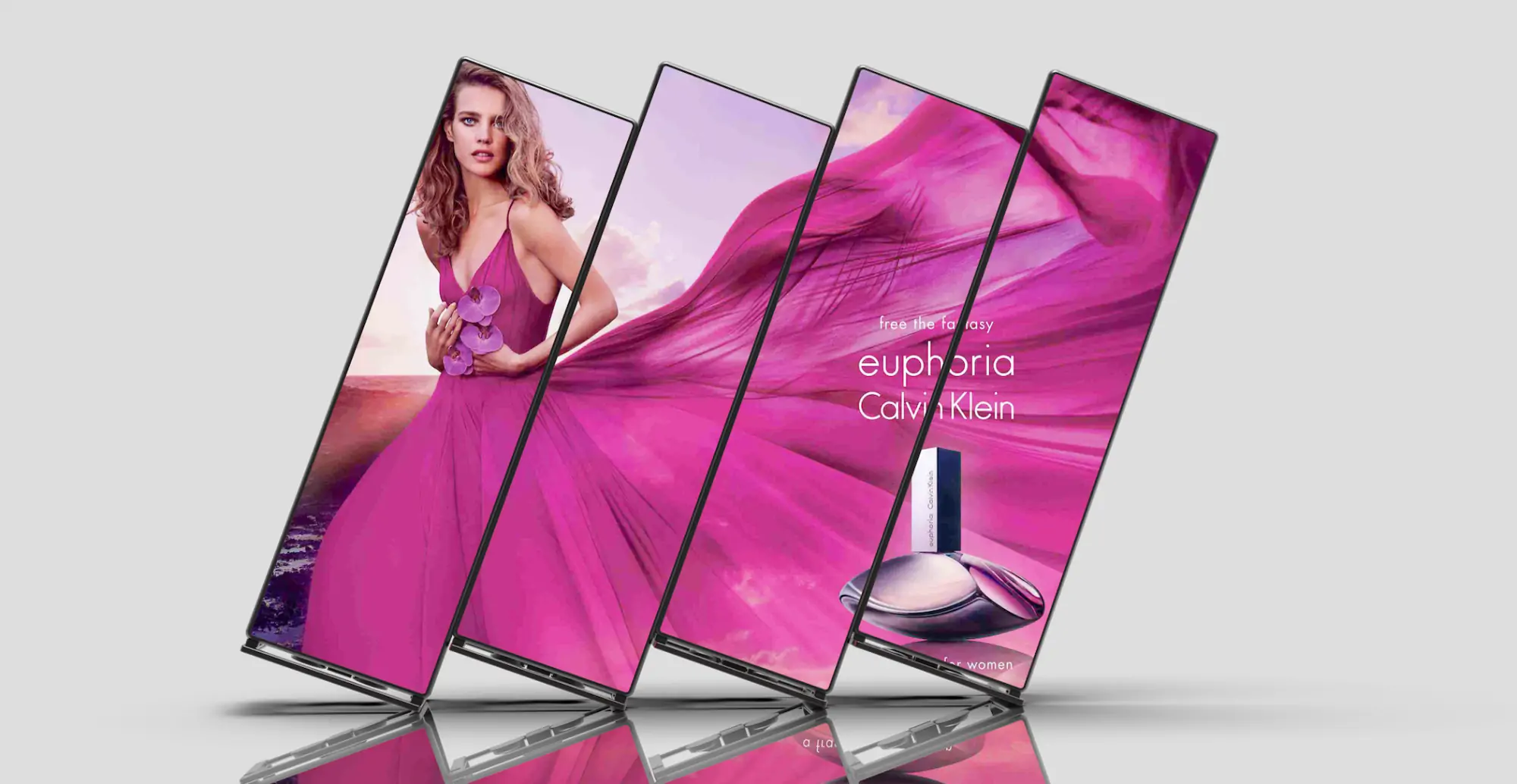
1.1 Common Applications
Indoor Scenes: LED poster screen can be widely used in indoor environment, such as: hotel, airport, hospital, shopping mall, bank, etc.
Outdoor Scenes: LED totems are also suitable for bus stations, parks, smart city construction, working streets, communities and so on.
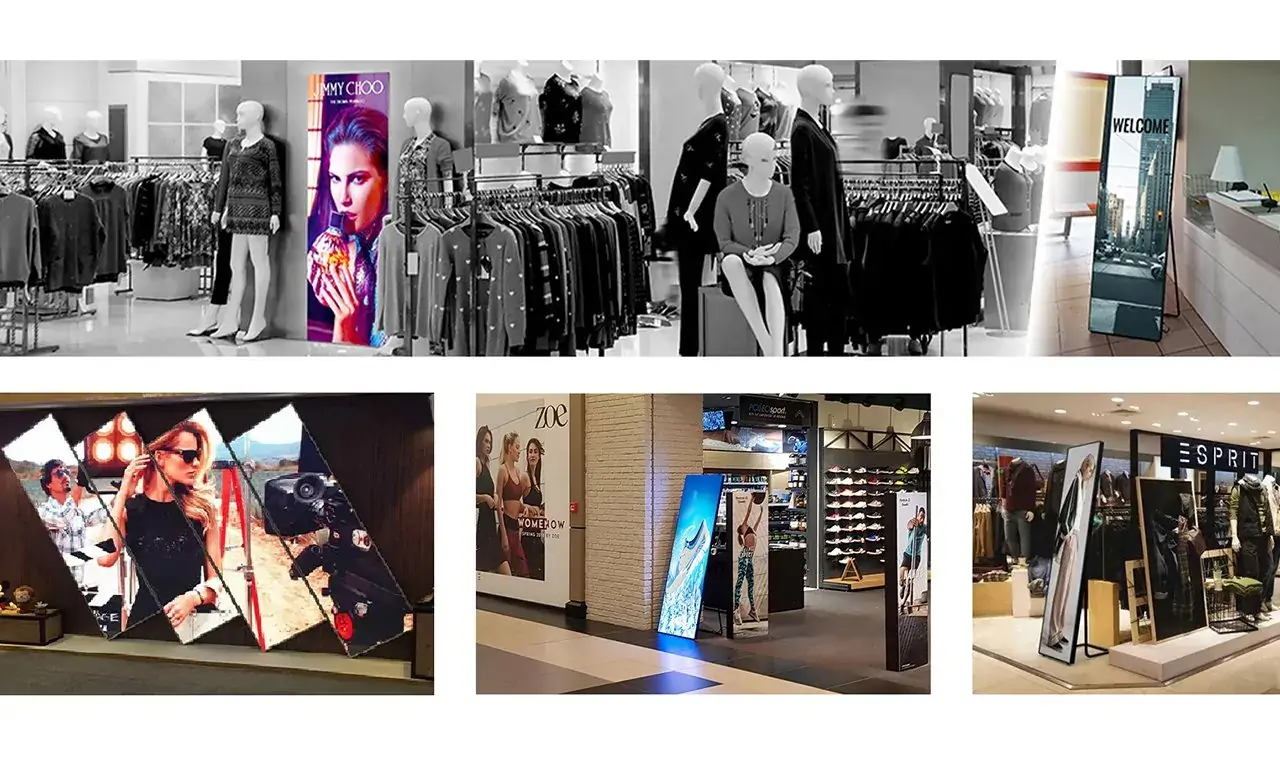
2. How Does An LED Poster Display Work?
LED poster displays utilize LED (Light Emitting Diode) technology to produce bright, high-quality visuals that can display vivid content such as images, videos and animations. Here is an overview of how it works:
a. LED Technology:
LED posters use arrays of light emitting diodes as individual pixels to form the displayed image or video. These LEDs produce high brightness and vibrant colors, ensuring clear visibility even in bright indoor environments.
b. Pixel Composition:
A screen consists of thousands of tiny LEDs grouped into pixels. Each pixel typically consists of three sub-pixels (red, green and blue) that work in tandem to display full colour visuals. By adjusting the brightness of each sub-pixel, LED poster display can appear in a variety of colors.
c. Content Input:
Content is uploaded to the LED poster screen via a variety of input methods such as USB, Wi-Fi or HDMI. Advanced models allow users to manage content remotely using software or mobile apps for fast updates and real-time control.
d. Control System:
The LED control system processes incoming content and ensures that the correct visual data is sent to the appropriate pixels on the screen. The control system manages brightness, colour and contrast to optimize the display quality according to the content and environment.
e. Power Supply:
LED poster displays are powered by an inbuilt power supply unit that converts electrical energy into the necessary voltage to effectively light up the LEDs. LED technology is known for its energy efficiency and reduced power consumption as compared to conventional displays.
f. Modular Design:
Many LED poster display screens have a modular design that is easy to maintain and repair. If part of the display fails, a specific module can be replaced without affecting the entire screen.
g. Plug and Play:
Most smart LED posters are designed to be easy to install. Once powered on, users can load content and display it immediately without complex configuration, which is very convenient for non-technical personnel.
3. What Are the Main Features of LED Posters in 2025?
3.1 Remote Control
Integrated Wi-Fi, Bluetooth and 4G/5G connectivity allow users to remotely update and manage content via smartphones, tablets or computers. These features enable businesses to change advertisements in real time and respond quickly to trends.
3.2 Ultra-Thin and Lightweight
Modern LED totems are stylish and slim, with lightweight structures, making them easy to carry and install in a variety of venues. The indoor digital LED poster weighs only 35 kg. This design improves flexibility and convenience for organizations that frequently move or update display screens.
3.3 Energy Saving
Energy-saving functions are essential for LED poster screens. Some modern LED totems also have automatic shutdown functions when not in use or adjust brightness to save energy. These features not only help reduce electricity bills, but also extend the life of the poster LED display, contributing to environmental protection and reducing carbon emissions.
3.4 Multiple Installation Methods
LED banner supports a variety of installation methods to meet different application spaces, such as hanging installation, wall installation, pedestal installation, horizontal installation and creative splicing. You can also use it horizontally to make a banner, or you can place multiple LED digital posters together horizontally to combine into screens of different sizes.
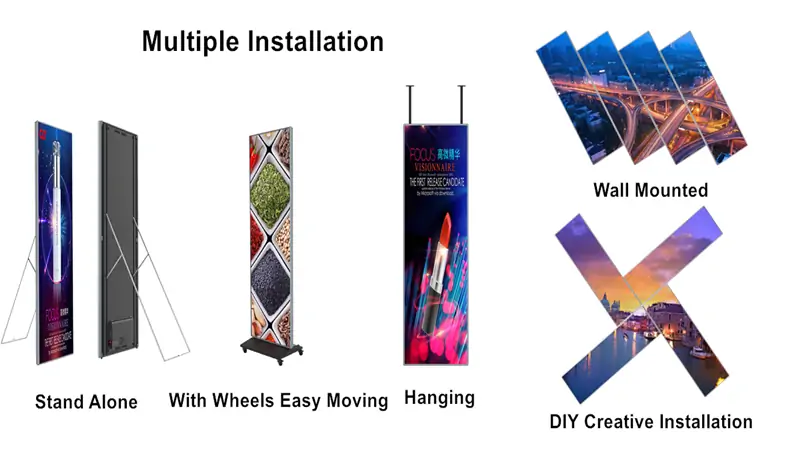
3.5 Plug and Play Function
Poster LED displays are plug-and-play, easy to set up and require no complicated installation or calibration. Users can open the poster, upload content and display it immediately, perfect for fast-paced environments.
3.6 Interactive Features
Many 2024 models are equipped with an interactive touchscreen or motion sensor that allows users to interact with the LED banner display. This feature enhances customer engagement, especially in retail or exhibition environments.
3.7 Customized Content Templates
Preinstalled templates and a simple content management system allow businesses to quickly customize their LED posters with minimal effort. Content templates can include text, video or animated elements, providing endless creative possibilities.
4. How to Control Content on An LED Poster Screen?
Below are the main management methods. These methods will help you easily control and manage the content displayed on the LED totem to provide real-time and engaging advertising content to your audience.
4.1 Wi-Fi or LAN Connection
Connect your LED posters to a local Wi-Fi network or LAN for remote content management. Upload new content, schedule updates or rearrange playlists in real time using the software provided on your computer, tablet or smartphone or a cloud-based content management system (CMS).
4.2 USB Content Management
Insert the USB drive containing the desired content (images, videos, etc.) into the USB port of the LED poster display. The LED banner will automatically detect and load the content. You can then use the remote control or the on-screen menu to browse the file to adjust or replace the content.
4.3 HDMI or External Devices
To update content in real-time, connect your laptop or media player to the LED totem display using HDMI or other external input device. You can then stream live content or adjust content directly from an external device for more dynamic and flexible display options.
4.4 Cloud-Based Content Management
Many modern poster LED display screens support cloud-based content management systems. Log into your cloud platform, upload or modify content, and schedule displays for seamless updates. This approach is ideal for organizations managing multiple LED posters in different locations as it allows centralized control of all screens.
4.5 Content Management Software (CMS)
If your LED poster screen comes with dedicated CMS software, install it on your PC or Mac. This software typically supports drag-and-drop content uploads, arranging content playlists, and adjusting screen settings such as brightness and contrast. You can also cycle through multiple pieces of content or update the poster LED display on multiple screens from a single interface.
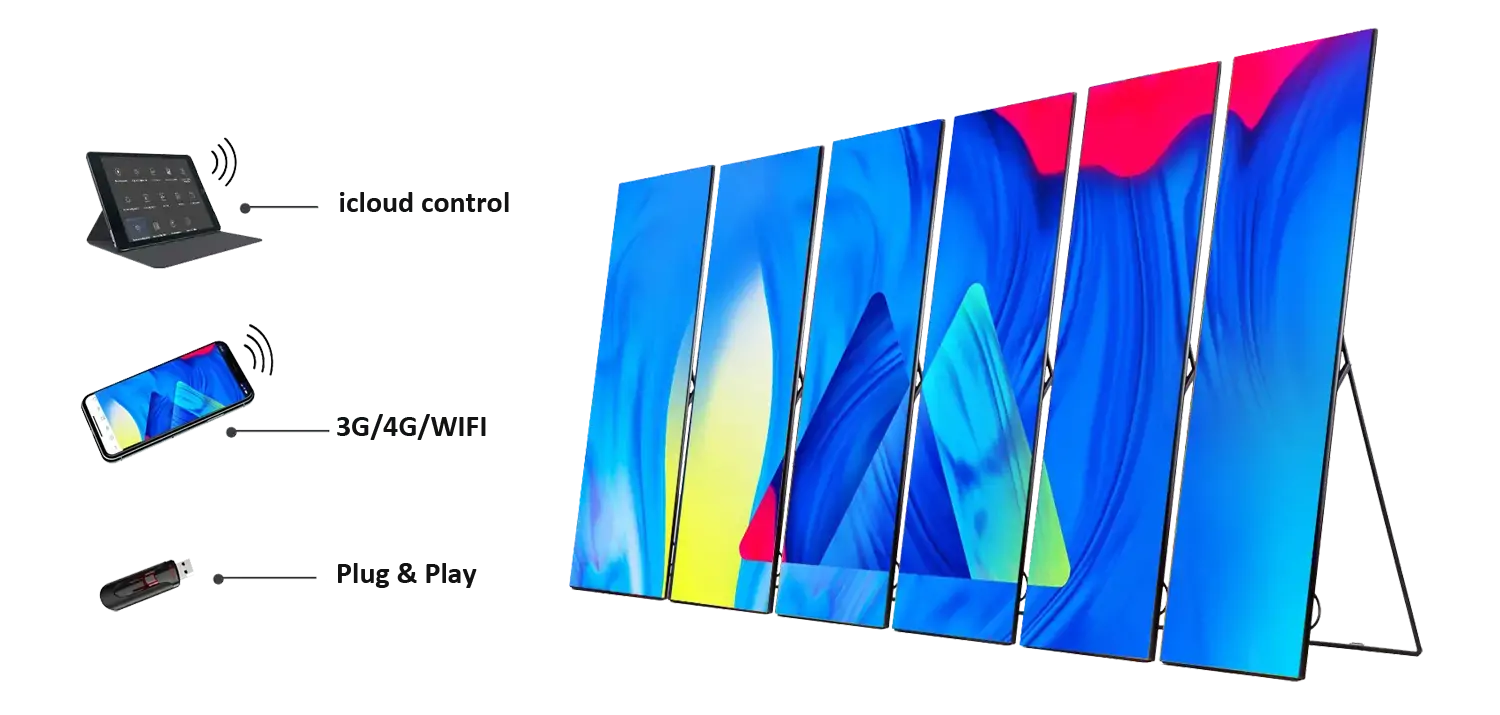
5. Poster LED Screen VS LCD Poster
LCD stands for Liquid Crystal Display. LCD does not produce light directly. It uses a backlight to create an image. If you want an LCD to light up, then it must have a backlight because it doesn’t light up on its own.
Think of an LCD screen as a sandwich with several layers. There is a polarising filter at the top and a protective layer behind it. Then the LCD sheet is placed underneath and finally the backlight. LCD posters are usually used in indoor environments. It is a good choice for small screens as it offers high definition, aesthetics and low initial cost.
Are you curious about the main differences between LED banners and LCD posters. Keep reading this article and you will get your answer below.
5.1 Display Technology
LED Posters: LED poster screens utilize Light Emitting Diode (LED) technology to create vivid, dynamic visual effects. These screens consist of a series of miniature LEDs that emit direct light to produce bright, colourful images.
LCD Poster Screens: LCD poster screens, on the other hand, use Liquid Crystal Display (LCD) technology to generate images. LCD screens consist of a layer of liquid crystals sandwiched between two pieces of glass. When an electric current is passed through the crystals, they are aligned to control the passage of light to display the image.
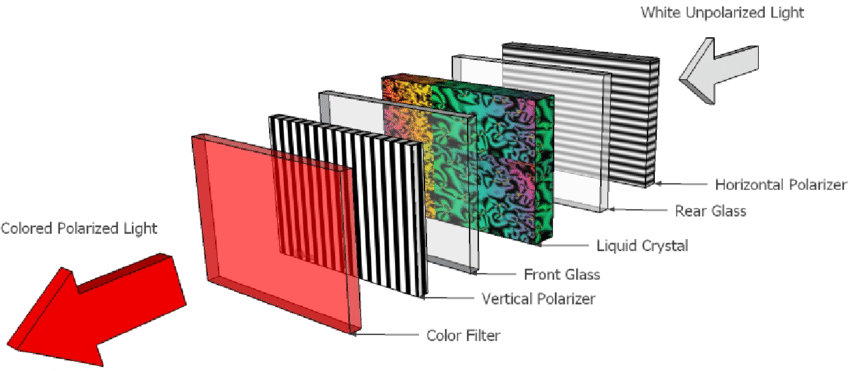
5.2 Content Flexibility and Interactivity
LED Totem: LED poster display offers dynamic content flexibility. It can display video, animation and compelling graphics to the viewer. While they may not be as touch-enabled as LCD screens, they are very good at attracting attention through captivating visuals.
LCD Posters: LCD posters often have touchscreen capabilities that provide an interactive experience for the user. This interactivity can be leveraged to create engaging content, interactive maps and product catalogue. Touchscreen LCD poster screens enable users to browse content, make choices and interact directly with it. This enhances the user experience and drives engagement.
5.3 Brightness and Visibility
Poster LED Screen: Higher brightness, ideal for brightly lit environments or outdoor use. The vivid visual effect ensures that the content is clearly visible even in direct sunlight.
Poster LCD Screens: LCD poster screens are typically lower in brightness and are better suited to indoor environments with controlled lighting. In bright conditions, content may appear faded.
5.4 Image Quality
LED Banner Displays: Vivid colors and high contrast make the content appear more vibrant and dynamic. LED posters are ideal for displaying high-impact, vibrantly coloured visuals.
Poster LCD Displays: LCD posters have a sharper image resolution and are better suited to displaying detailed static content or where high resolution text is required. However, they may lack the colour intensity of LED screens.
5.5 Design and Application
LED Poster Displays: It is usually slim and lightweight, similar to traditional posters. Screen sizes vary from small displays for indoor use to large outdoor displays. LED poster displays are sleek, easy to install and can be used in a variety of settings such as retail shops and shopping malls. They are also ideal for events and exhibitions.
LCD Poster: LCD stands, also known as digital kiosks or totems, are upright displays that can be freestanding. They stand on a pedestal or base. Some models are equipped with a touch screen for easy interaction. They come in a variety of sizes and shapes. Poster LCD displays are used to display information, advertisements and directions in high-traffic areas such as shopping centers, airports and hotels.
5.6 Life Expectancy (Durability)
Poster LED screens have a life expectancy of 80,000 hours or more, whereas LCD screens have a shorter life expectancy, especially if the customer places them in an outdoor application.
LCDs in outdoor applications sometimes overheat, which can cause the system to stop functioning. Many LCD posters only remain in working order for a few months or a year before needing to be returned to the manufacturer for repair. The life cycle of LCD poster displays is typically less than two or three years.
5.7 LED Poster Prices
LED Display Posters: LED posters may cost more upfront due to their advanced technology, but their energy efficiency and durability usually make them a better long-term investment.
Posters with LCD Screens: LCD screens are often more affordable initially, but the higher energy consumption and shorter lifespan will increase the overall cost over time.
5.8 Power Consumption
The power consumption ratio between LED and LCD posters is approximately 1:10, meaning that poster LED displays are more energy efficient than the latter.
This difference stems from their construction, and it is important to consider the cost of power as one of the key factors when considering budgets, as the cost of display power consumption will account for a significant portion of operating costs.
LED posters therefore provide high definition, vivid and high brightness images and are typically used in indoor or outdoor scenes with a variety of lighting conditions. LCD posters are more suited to indoor environments with lower lighting requirements, providing viewers with static content such as text or high resolution images.
6. Digital LED Poster Installation Guide
Digital LED poster supports standing mounting, wall mounting, hanging mounting, in-built mounting, rolling stand mounting and other mounting methods to meet the needs of your different business activities. Here we will provide you with a detailed installation guide for standing installation.
- Lock the wheels at the bottom of the LED poster to avoid movement during installation
- Fix the bracket to the base and tighten the screws with hexagonal spanner
- Attach the LED box to the bracket and fix it with hexagonal screws
- Stack the second LED box on top of the first box, tighten the two screws between the two cabinets
- Fix the upper and lower boxes with U-type connectors
- Repeat the same installation steps to install the fourth LED cabinet
- Assemble the control box and connect the power cable of the box to the control box
- Connect the signal and power lines between the cabinets
- Seamlessly splice two LED posters and tighten the fixing screws
- Mount the LED module to the LED cabinetto complete the assembly
EagerLED video will provide more detailed information to help you understand how to install and splice LED poster screen. Our technical team can also provide you with professional guidance on various installation methods.
7. How to Maintain the Poster LED Display?
Maintenance methods are divided into front maintenance and back maintenance, the specific steps are as follows, you can choose the appropriate installation method according to the specific situation.
7.1 Front Maintenance Steps
When space is limited or the poster is mounted on a wall, maintenance of the front of the LED poster is critical because the back is difficult to access. The following is a step-by-step guide:
1.Switch Off the Power
Before starting any maintenance, make sure the LED poster screen is turned off and disconnected from the power source to avoid electrical hazards.
2.Remove the Front LED Module
Use the special suction cup tool to gently pull the LED module from the front. Most LED totems have magnetic modules that can be easily removed. If the module is screwed in, use a screwdriver to carefully unscrew and remove the module.
3.Inspect the LED Module
After removing the module, inspect the LEDs, power supply, and any connectors for signs of damage, wear, or dust accumulation. Check for bad or faulty LEDs that may need to be replaced.
4.Clean the LED Module
Clean the surface of the LED module with a soft, lint-free cloth. If necessary, gently moisten the cloth with a screen-safe cleaner. Avoid applying direct pressure to the LEDs.
5.Repairing or Replacing Components
If an LED poster module or component is damaged, replace it with a new one. Make sure the replacement module meets the specifications of the existing module (e.g., pixel pitch, brightness).
6.Reinstall the LED Module
Re-align the modules and secure them with magnets or screws according to the design of the poster. Ensure that the module is flush with the surrounding modules for even screen flatness.
7.Test the Display
Switch the power back on and test the LED poster display. Check for any inconsistencies in brightness, colour or alignment between the repaired module and the rest of the screen.
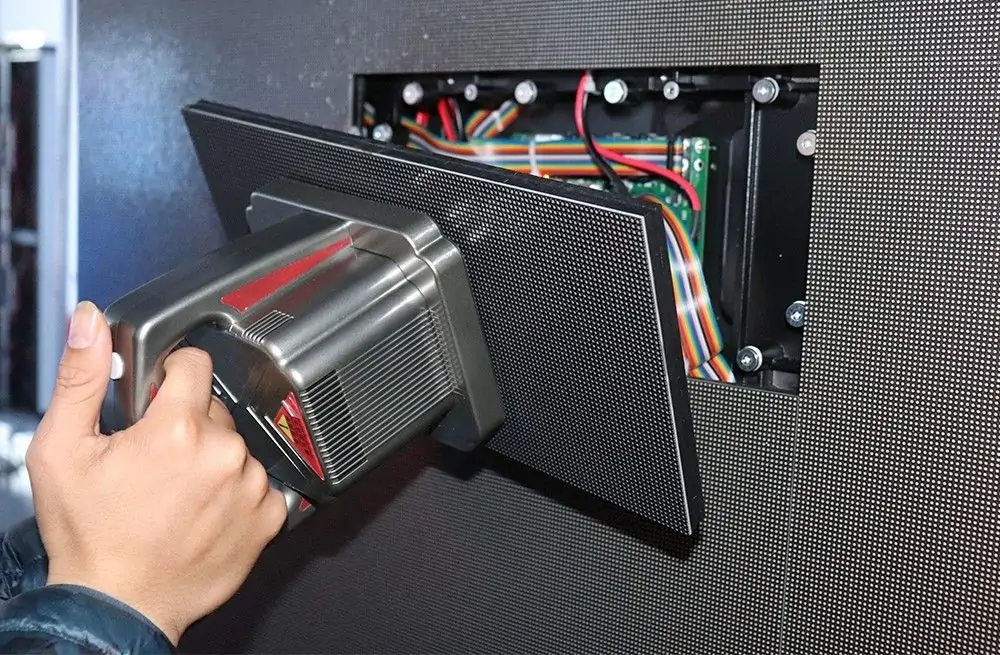
7.2 Rear Maintenance Procedure
Rear maintenance is a common practice for freestanding or mobile LED posters because of the access to the rear of the screen. The steps are as follows:
1.Turn Off the Digital LED Poster
Before beginning maintenance, turn off the poster LED screen and disconnect power for safety.
2.Access the Rear Panel
Remove the back cover or access panel of the digital LED poster. Use a screwdriver or other required tool to open the panel and access the internal components.
3.Inspect Internal Components
Visually inspect the power supply, cables, receiver card, and any other internal components for signs of damage or loose connections. Check for dust build-up or moisture that could affect performance.
4.Check and Clean the Power Supply
Use a can of compressed air to remove dust from the power supply unit. Check the power cords and connectors to make sure they are secure and functioning properly. If the power supply unit shows signs of damage or failure, replace it with a new unit.
5.Check Data and Signal Lines
Check the data and signal cables that connect the control system to the LED module. Make sure there are no frayed or damaged cables and replace any that show signs of wear. Reconnect any loose data or signal cables to ensure proper communication between the control system and the LED module.
6.Module Replacement (if necessary)
If the LED poster module needs to be replaced, disconnect it from the data cable and power supply and remove it from the back. Install the new module by connecting the data and power cables to the new module and securing it in place.
7.Reassemble the Rear Panel
After completing repairs or cleaning, reassemble the rear panel or cover. Ensure that all screws and fasteners are properly tightened to maintain the structural integrity of the poster.
8.Power Up and Test the Display
Reconnect the power and switch the LED poster back on. Test the screen for proper operation to ensure that all modules are displaying content correctly without any defects.
9.Recalibrate the Display
After replacing or repairing any components, recalibrate the LED poster display to ensure consistent colour accuracy, brightness and pixel alignment across the screen.
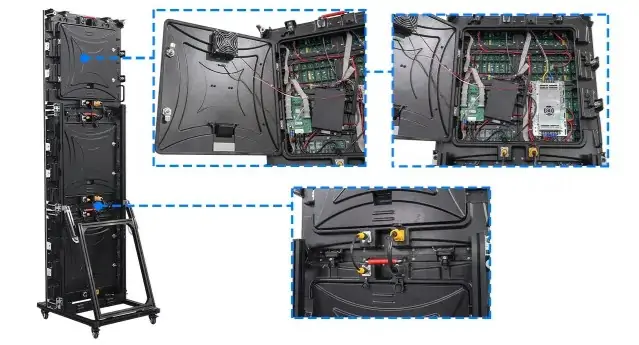
8. Why Choose EagerLED?
EagerLED is a professional LED display manufacturer with over 15 years of manufacturing experience. We own 5000+㎡ workshop area, customized solutions to customers from over 90 countries, and 2 years warranty. These factors make us stand out among Chinese LED display manufacturers.
8.1 Global Certification Standards
Our EagerLED has professional global quality certificates, such as CE, RoHS, FCC, PSE, BIS, ISO9001 and so on. These certifications reflect that our products meet international quality standards and requirements.
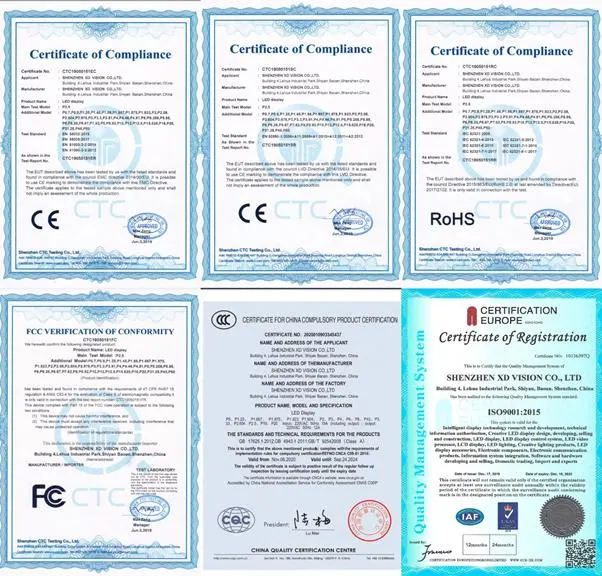
8.2 7/24 Hours Service Team
Our 7/24 hours service team provides pre-sales, in-sales and after-sales services, including pre-sales consultation, LED display recommendation, technical support and after-sales quality assurance.
8.3 Professional Technical Partners
We cooperate with professional technology partners such as Colorlight, Huidu, Novastar, Nationstar, Kinglight, etc., to provide customers with excellent technical solutions and services through joint innovation and development.
8.4 Outstanding Display Effect
High-quality LED beads, internationally renowned driver ICs and a high refresh rate of up to 3840Hz ensure that our LED banner has a high standard of visual effects.
9. Conclusion
This article has provided a complete introduction to LED posters, including their definition, technology, key features, installation and maintenance. We have also explained why EagerLED is the best choice for you. If you have any questions or queries, please send us a message! We will respond as soon as possible.
Related Posts
Fill In Your Needs In Detail
Fill in the screen usage scene and size you need in “Content”.You will get a quote.

